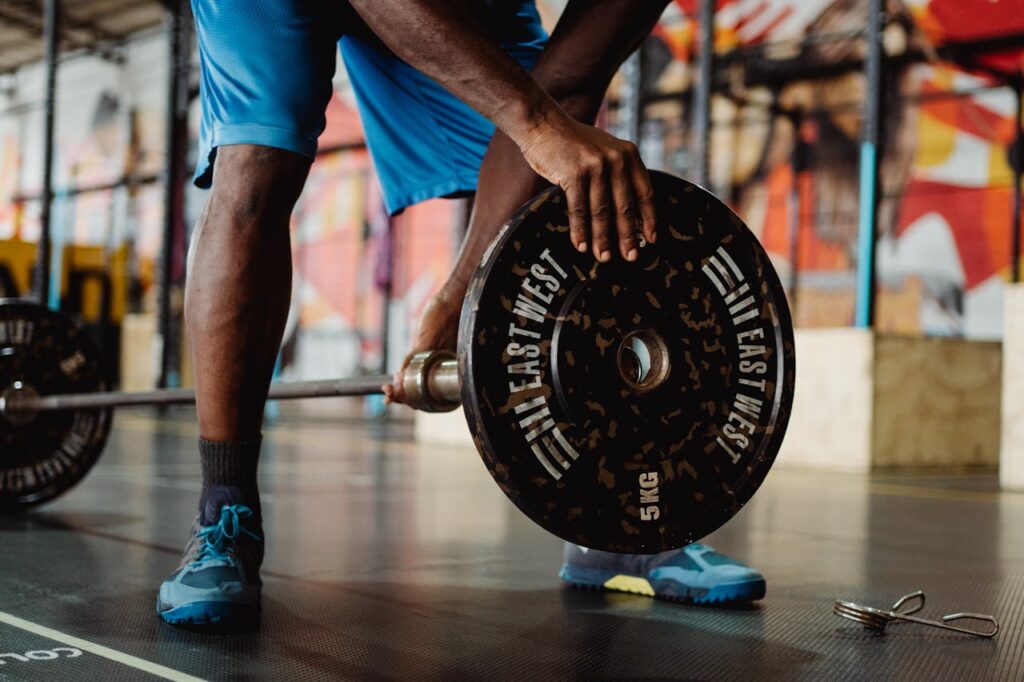How often should you deadlift? This question plagues many lifters, from beginners navigating their first workouts to seasoned veterans refining their training routines. In this guide, we’ll explore the essential tips and considerations for determining the optimal frequency of deadlifts in your workout regimen. Understanding the intricacies of deadlift frequency is critical to unlocking your full potential in the gym.
How often should you deadlift? Whether building strength, packing on muscle mass, or enhancing overall fitness, find your optimal deadlift frequency here!
In this article:
- Understanding Deadlift Frequency
- How Often Should You Deadlift: Factors to Consider
- Finding Your Ideal Frequency
- How Often Should You Deadlift: Beginner, Intermediate, and Advanced
- Common Mistakes to Avoid
UNDERSTANDING DEADLIFT FREQUENCY
The deadlift, a cornerstone of strength training, involves lifting a weighted barbell from the ground to a standing position. This movement engages many muscle groups simultaneously, showcasing its significance in fostering overall strength and muscular development. Understanding deadlift frequency, or how often you integrate this exercise into your workout routine, is pivotal for optimizing training efforts and achieving your fitness objectives.
Deadlift frequency is all about balancing, providing enough stimulus for strength and muscle growth while allowing enough time for recovery. This exercise targets various muscle groups, including but not limited to the back, glutes, hamstrings, and core. Given its compound nature, deadlifts can place considerable demands on the body, especially when executed with heavier weights or heightened intensity levels.
If you’re enhancing your home gym and contemplating adding a barbell to your equipment arsenal, we have an ideal solution to ramp up your workouts. Enter the Barbell Weight Set for Lifting—a stellar addition to any home gym setup. With its adjustable weights and ergonomic design, this barbell set offers the versatility and comfort you need to optimize your deadlift routine. Whether you’re a beginner or an experienced lifter seeking to refine your technique, it has you covered.
HOW OFTEN SHOULD YOU DEADLIFT: FACTORS TO CONSIDER
Determining the frequency of deadlifts in your workout routine requires careful consideration of various factors. While deadlifting offers numerous benefits for strength and muscle development, finding the right balance in frequency is crucial to maximizing gains while avoiding overtraining and injury.
One essential factor to consider is your training experience and fitness level. Beginners may need more time to recover between deadlift sessions than seasoned lifters.
Another critical consideration is your overall fitness goals. You may benefit from deadlifting more frequently if your primary objective is to build strength and muscle mass. On the other hand, if you’re focusing on endurance or incorporating different forms of exercise into your routine, a lower frequency of deadlifts may be more suitable.
Recovery capacity is also an essential factor to consider. Some individuals naturally recover more quickly than others, allowing them to deadlift more frequently without experiencing fatigue or overtraining. Pay attention to how your body responds to each deadlift session. Adjust your frequency accordingly to ensure adequate recovery time.
It’s also essential to consider any existing injuries or limitations affecting your ability to deadlift safely. For example, suppose you have a history of back problems or other issues. In that case, you may need to adjust your deadlift frequency and technique to avoid exacerbating these issues.
Finding the right frequency of deadlifts requires experimentation and listening to your body’s signals.
FINDING YOUR IDEAL FREQUENCY
Discovering the ideal frequency for integrating deadlifts into your workout routine is a personalized journey that requires attention to your body’s responses and adaptation over time. While there is no one-size-fits-all approach, several strategies can help you pinpoint the frequency that best aligns with your goals and abilities.
Firstly, assessing your current fitness level and familiarity with deadlifts is crucial. Beginners may start with a lower frequency, such as once or twice a week, to allow for proper technique mastery and gradual adaptation to the exercise’s demands. As proficiency improves, you can gradually increase the frequency to challenge your muscles further.
Consider your overall training volume and intensity when determining deadlift frequency. Suppose deadlifts are a primary focus of your routine, and you’re lifting heavy weights with high intensity. In that case, you may need more rest days between sessions. On the other hand, if deadlifts are just one component of your workout regimen, you can incorporate them more frequently without compromising recovery.
Listen to your body’s signals during and after each deadlift session. Signs of fatigue, soreness, or decreased performance may indicate that you need more recovery time between sessions. Conversely, feeling energized and strong may suggest that you can increase the frequency or intensity of your deadlift workouts.
Experimentation is vital to finding your ideal frequency. Try different frequencies, such as training deadlifts once, twice, or thrice weekly, and observe how your body responds over time. Keep track of your progress, noting any changes in strength, muscle soreness, and overall well-being, to fine-tune your approach accordingly.
HOW OFTEN SHOULD YOU DEADLIFT: BEGINNER, INTERMEDIATE, AND ADVANCED
Different considerations are involved when determining how often beginner, intermediate, and advanced lifters should incorporate deadlifts into their workout routines.
For beginners, starting with a lower frequency of deadlifts is recommended. It allows newcomers to focus on mastering proper technique and form while gradually adapting to the exercise’s physical demands. Beginning with one to two deadlift sessions per week can provide sufficient stimulus for muscle growth and strength development without overwhelming the body.
Intermediate lifters who have developed a solid foundation of strength and technique may benefit from increasing the frequency of their deadlift workouts. Training deadlifts two to three times per week can help intermediate lifters continue to progress and build upon their strength gains. However, monitoring recovery and listening to the body’s signals is essential to avoid overtraining and injury.
Advanced lifters with a high level of strength and proficiency in deadlifting may be able to handle higher frequencies of deadlift training. Training deadlifts three to four times per week or incorporating variations of the deadlift, such as deficit or snatch-grip deadlifts, can provide advanced lifters with the necessary stimulus to continue progressing and challenging their muscles.
Regardless of experience level, lifters must prioritize recovery and listen to their bodies when determining deadlift frequency. Overtraining can lead to fatigue, decreased performance, and increased risk of injury. By gradually increasing frequency and paying attention to recovery, lifters can optimize their deadlift training for continued progress and success in the gym.
COMMON MISTAKES TO AVOID
Avoiding common mistakes is essential to ensure safe and effective deadlift training:
- Neglecting Proper Form and Technique: Poor form can lead to injuries, such as lower back strains or muscle imbalances. Prioritize proper technique, which involves maintaining a neutral spine, engaging the core, and using the legs to drive the movement. Practicing with lighter weights and seeking guidance from a qualified trainer can help reinforce the proper form.
- Overdoing Frequency: While deadlifts are beneficial, performing them too often can lead to overtraining and hinder recovery. You should listen to your body’s signals and allow time for recovery between deadlift sessions.
- Neglecting Warm-Up and Cooldown Routines: Failing to adequately prepare the body for deadlifts with dynamic stretches and warm-up sets can increase the risk of injury. Similarly, skipping cooldown exercises such as foam rolling or static stretching can prolong muscle soreness and impede recovery. Incorporating proper warm-up and cooldown routines can minimize the risk of injury.
- Ego Lifting: Lifting heavier weights than you can safely handle – is a mistake that can lead to serious injury. Prioritize gradual progression and concentrate on form and technique instead of lifting the heaviest weight possible. Gradually increasing weight while maintaining proper form is critical to long-term progress and injury prevention.
By avoiding these mistakes and prioritizing proper form, rest, and recovery, you may maximize the benefits of deadlift training.
_____
So, how often should you deadlift? The answer lies in finding the balance that works best for you. It will allow you to achieve your fitness goals while staying injury-free and enjoying the journey of self-improvement. Keep lifting, stay committed, and never stop striving for progress. Your body will thank you for it.
This post may contain affiliate links. You can read the affiliate disclosure here.









